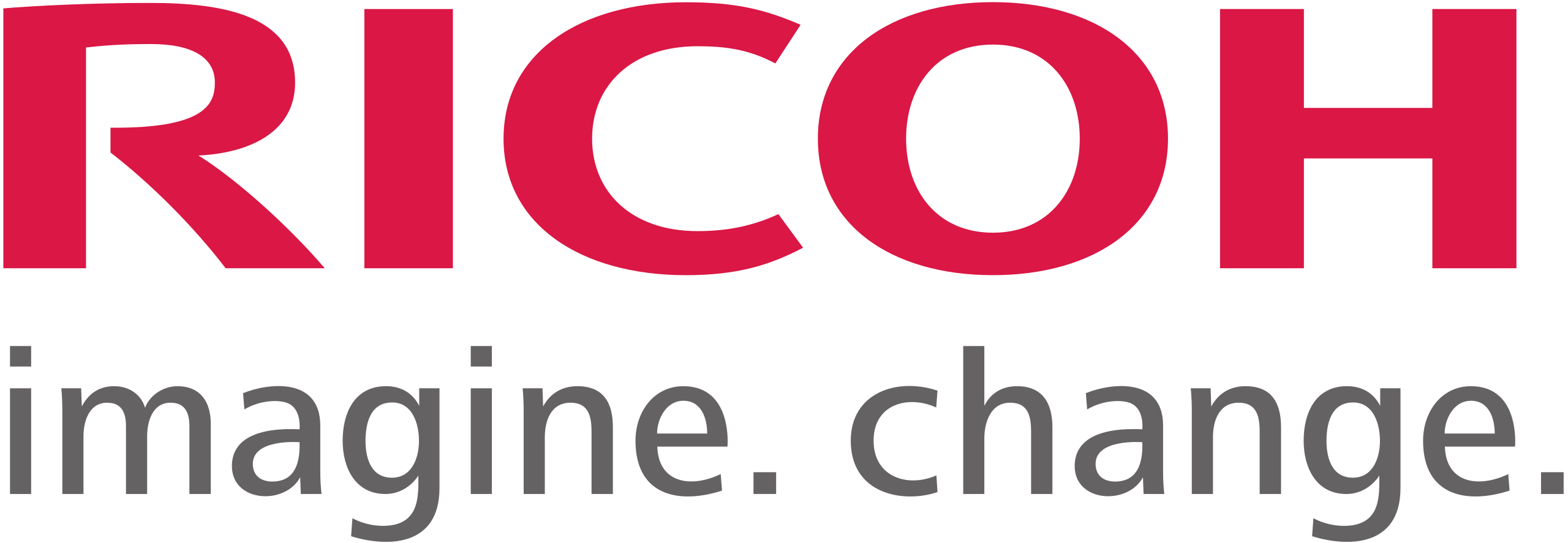6 min read
Setting and Achieving Business Transformation Objectives
By:
Kali Mogg
on
December 20, 2021
Updated: July 12, 2024

Achieving strategic goals and realizing business transformation means first understanding and establishing business transformation objectives. Without objectives, progress and change become difficult to define, realize, and measure. While strategic goals and performance objectives can overlap, establishing a why behind change can’t be overlooked.
Business transformation involves making fundamental changes in how a business operates. Changes can involve improving and modifying technology, customer experiences, corporate culture, business strategies, and other components. All aim to improve how business is conducted across business models. Read more about business transformation and why it matters.
By learning to establish clear objectives, you’ll set your company up for not just change itself but successful change and continuous innovation based on business transformation strategy.
Business Transformation Objectives Matter. Here’s Why.
In business terms and other senses of the word, an objective is an outcome stated in measurable terms. Goals, while related to objectives, describe the benefit or broader purpose behind an effort. Objectives are the quantifiable stepping stones that lead to a goal.
So, why do business transformation objectives matter?
- Without transformation objectives, business strategies and business transformation can lack both indicators and definitions of progress.
- Continuous innovation sounds like progress, but it can lose sight of purpose without strategic goals and defined transformation objectives.
Finally, performance objectives meet the needs of a target market and key stakeholders. For example, they could involve introducing a new product or service or improving efficiency or cost-effectiveness. Business transformation objectives often stem from such wants.
The 5 Ws and H Behind Transformation Objectives and Successful Change
Creating change involves planning and stages. Knowing the five “Ws” and the “How” behind change can lay the foundation for successful transformation.
Where – Where does business transformation take place?
Transformation, in terms of effects and planning, happens everywhere! Because business transformation affects all people and parts of a company, transformation efforts aren’t just limited to a management team and to business leaders.
While establishing transformation objectives, employees, business leaders, customers — basically everyone — needs to be kept in mind. That’s why objective formation should transcend an organization, its people, and corporate culture. Strategic goals and planning should be company wide, not siloed in meeting rooms. While all should participate in the transformation process, enabling employees and customers the means of doing so is critical.
Who – Who must be involved in creating successful transformation objectives?
Once again, the short answer is everyone. But it’s often up to business leaders to set the transformation process in motion.
- Executives must realize the case for business and cultural transformation
- Management teams define achievable objectives and strategic goals
So, where does this leave other employees as well as customers? Influence from both of these groups should shape the plan details. Those on the ground can best recognize the areas needing change and signs of successful transformation.
What – What should the transformation objectives be?
Actually defining business transformation objectives comes down to answering, what would you like your business to look and be like? Mission, vision, and broader business goals can help to shape clear objectives.
Increased revenue, for example, seems like a clear enough objective pointing toward the broader goal of success. But objectives stemming from a company’s fundamental purpose, such as educating the next generation of leaders or helping people to manage their financial assets, may be more successful over time.
An organization’s core values affect the types and nature of relationships that an organization has, both within itself and with external stakeholders such as customers and business partners. Establishing objectives aligned with these core values is important to help build and retain the trust and respect of stakeholders and secure their cooperation and participation in meeting strategic goals.
It can be especially helpful to have an external advisor when determining the “what” behind transformation efforts. Standley Systems has helped advise various companies on digital transformation strategy and determining the right objectives to pursue related to digital technology and other components. Standley can help your company, too.
When – When is the completion time frame?
Business transformation, digital transformation, cultural transformation — all of these business processes take time. Some companies can create change and set strategic goals quickly. Others take longer. Yet trying to follow a set time frame set by another company’s example can be misleading. Business leaders, corporate culture, and business processes differ at every organization. Therefore, a “good” time frame:
- Factors in flexibility, accounting for both faster and slower rollout
- Includes short- and long-term success goals
- Includes input from all stakeholders, including employees, customers, and management
- Conveys an appropriate need for urgency but with respect to realistic and achievable benchmarks
In addition to the overall business transformation time frame, a timeline for establishing objectives and goals can also be helpful. Still, because change builds on and is measured by these objectives, it’s important not to rush the process, even when the need for cultural transformation and other change is apparent.
Why – Why is your company choosing to transform?
If objectives are the building blocks of transformation, then motive is the stuff that objectives are made from. But the benefits of business transformation can be realized only when there’s a why behind each new action. Clearly identifying motive is so important because it’s the foundation for change to business models.
Remember, business transformation is a big topic, affecting business leaders, customer experiences, employees, corporate culture, digital technology, and more. For many companies, people, processes, and technology are the keys behind change. So, knowing exactly what and why each must change or grow will be key to long-term change.
It may be helpful for an organization to once again recall its mission and values. Change that transcends both business transformation and objectives and goals and furthers a company’s fundamental mission can be more conducive to long-term transformation.
How – How do you achieve business transformation based on solid objectives?
With all of the above steps, processes, and modes of thinking in place, success may seem imminent. Yet thinking both long- and short-term can help guide the path toward achieving transformation objectives. A long-term transformation plan likely won’t suddenly just succeed or fail all at once as long as:
- Short-term objectives are established and well-defined
- Smaller objectives and plans are monitored for success and able to change as needed
The transformation process is simply too large to achieve in one great stride. Rather, successful short-term and smaller objectives should add up to larger successful transformation. The “how” behind digital transformation, changes to organizational culture, and other transformations breaks down to setting plans, carrying them out, and adapting as needed.
WHAT ARE THE FOUR STAGES OF BUSINESS TRANSFORMATION?
Digital transformation typically involves a comprehensive change in how businesses operate and deliver value to their customers by leveraging digital technologies. The four stages of business transformation can vary slightly depending on the framework used, but they generally include the following:
1. BUSINESS AS USUAL (STATUS QUO)
At this initial stage, the company operates using traditional processes, systems, and methodologies. Digital tools and technologies might be present but are not central to the business strategy. The focus is primarily on maintaining existing operations and incremental improvements.
2. DIGITAL EXPERIMENTATION (INITIATION)
Companies start exploring digital tools and technologies to improve specific areas of the business. This stage involves small-scale pilot projects and experimentation. The goal is to understand the potential of digital solutions and how they can impact various aspects of the business, such as customer experience, operational efficiency, or product innovation.
3. digital transformation (scaling)
Successful digital experiments are scaled across the organization. This stage involves integrating digital solutions into the core business processes and systems. It requires significant investment in technology, people, and processes. The company starts to see substantial improvements in efficiency, agility, and customer engagement. This stage often involves restructuring and redefining roles and responsibilities to support the new digital-first approach.
4. Business transformation (institutionalization)
At this final stage, digital transformation is fully integrated into the company’s strategy and operations. The business operates in a fundamentally different way, leveraging digital technologies to drive continuous innovation and growth. The organization has a digital culture, and digital tools are embedded in all aspects of the business. This stage is characterized by an agile, customer-centric approach and the ability to rapidly adapt to changes in the market and technology landscape.
These stages represent a journey that companies undergo as they transform their operations and strategies to thrive in the digital age. Each stage requires different levels of commitment, investment, and change management to successfully transition to the next.
How Standley Systems Can Help With Business Transformation and Objectives
Transformation and change are both exciting, but daunting, concepts for any business. When setting such formidable goals and transformation objectives, don’t go at it alone. Standley Systems has helped both large and small companies to plan and achieve successful changes to business strategies and digital business transformation initiatives, among other growth measures.
Our team of experts can help you and your company, too. Contact us to learn more about how we can work together to outline and achieve a transformation plan. The need for change only grows with time, so get started on successful transformation today.

 800-522-3725
800-522-3725 info@standleys.com
info@standleys.com Support
Support











